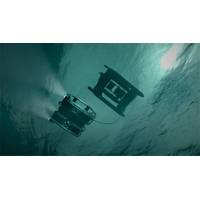
ESA, UK Space Agency Back ACUA Ocean’s Subsea Inspection Robotics System
ACUA Ocean has secured a European Space Agency (ESA) contract, supported by the UK Space Agency, to further advance its ‘nested robotic’ system for subsea inspection.The project will accelerate ACUA0’s development of Pioneer-class autonomous uncrewed surface vessel (USV) capabilities to launch and recover (LAR) remotely operated vehicles (ROVs).The ‘nested robotics’ approach - or robots deploying other robots - aims to expand the operational scope of uncrewed systems in offshore energy and subsea inspection.The system will use multiple satellite communications (satcom)
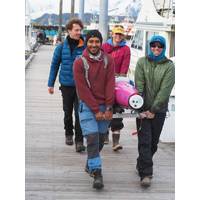
The Power of Scientific Collaboration is Perennial
from the University of Athens and the UK’s National Oceanography Center made a leap forward in understanding algal blooms. They were able to link an unprecedented marine algal bloom to an influx of nutrient-containing dust blown over the Indian Ocean from South Africa.Data from the European Space agency (ESA) was critical to the discovery. Multiple sets of ESA satellite data, from wide-ranging projects completed in the past, enabled the researchers to clearly track the extent of the bloom and pinpoint the dust events responsible for it.The importance of the work is that it suggests that
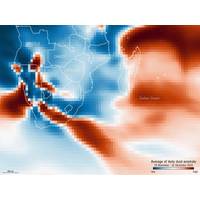
South African Drought Dust Fueled Record Ocean Bloom
that may boost plant and marine life growth.However, the relationship between desertification, dust emissions and ocean fertilisation has been poorly understood. The new study, published in PNAS Nexus, marks a significant step in unravelling these connections. The scientists worked through the European Space Agency’s (ESA’s) Living Planet Fellowships Poseidon and Pyroplankton.Lead author, John Gittings, from the University of Athens, says, “In addition to satellite data from the ESA Climate Change Initiative Ocean Colour project, we utilized information from ESA’s Climate Change

How AI Can Help Protect the Oceans
that AI can help find these heat-resilient corals. Without AI, it would have been like trying to find a needle in a haystack.Spotting plastic waste from space would have been almost impossible before AI image detection programs became available. How does it work? Essentially, photos taken by European Space Agency satellites are scanned by AI to spot hidden plastic dumps. Then we refine it over time, to see if these sites are getting bigger – and if they’re close to rivers or lakes, which could carry plastics into the seas and add to the millions of tonnes of turtle-choking, fish-killing
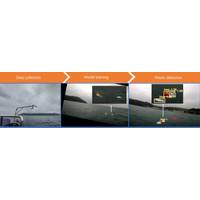
Floating Plastic Litter Detected, Categorized Using AI
scientists from Plymouth Marine Laboratory have ‘trained’ an Artificial Intelligence (AI) model to recognize and classify the different types of marine plastic captured in images shot by a video camera mounted on the side of a boat.Funded by the PML internal research program and the European Space Agency (ESA), the innovative study - titled “Detection and Classification of Floating Plastic Litter Using a Vessel-Mounted Video Camera and Deep Learning” - was carried out as part of an undergraduate placement project, with the results now published in the journal Remote Sensing.The
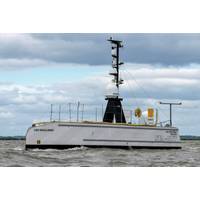
SEA-KIT's USV Equipped with Innovative Connectivity Solution by Inmarsat
, and commercial stakeholders from its base in Tollesbury, Essex. In inaccessible areas, USVs can complete tasks faster, more efficiently, and with reduced risk to personnel than conventional crewed vessels.Last year, SEA-KIT took part in a transatlantic survey project co-funded by the European Space Agency to demonstrate the capabilities of current technologies in deep ocean surveying. In July 2021, the company secured the first Unmanned Marine Systems (UMS) certificate from Lloyd’s Register."SEA-KIT is delighted to trial seamless switching and to work with Inmarsat to increase data
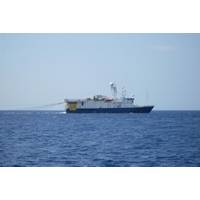
A Seismic Shift
de-risk subsurface storage, sequestration and geothermal energy sites using its expertise in geological, geophysical, engineering, modeling and monitoring technologies, including instrumentation from Sercel, its equipment division, it said.Also in April, a consortium led by CGG was picked by the European Space Agency’s Space Solutions initiative for a study aimed at developing new environmental monitoring technology and services to help combat the global marine litter crisis.CGG will collaborate with Mott MacDonald, a global engineering, management and development consultancy, and Brunel University
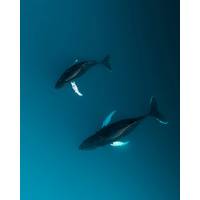
SPACEWHALE: Space Tech, AI meet to Monitor Whales from the Heavans
Modern space technology and artificial intelligence have combined to enhance the conservation of marine animals: the new service, “SPACEWHALE”, developed by a team of creative scientists in Germany and the UK, detects whales from space. Supported by funding from the European Space Agency (ESA) Space Solutions program, this research enables whales and other large marine megafauna to be surveyed at an unprecedented scale. Earth Observation from satellites is developing fast and within a few years, space technology companies aim to provide daily high-resolution images of the
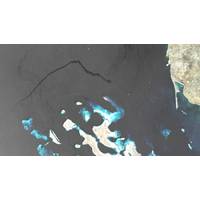
Seismic Data Firm CGG Launches Pollution Monitoring Solution
the creation of a growing evidence base of responsible operations for stakeholders such as operators, regulators, investors and insurers, etc.CGG said that SeaScope provided unique environmental awareness and insight to mitigate risk. The solution was developed with the support of the European Space Agency together with a group of energy companies and emergency response organizations. "This process included a highly successful 12-month prototype demonstration across assets in the North Sea along with select producing regions of the Gulf of Mexico and South-East Asia. SeaScope is highly
 December 2025
December 2025





